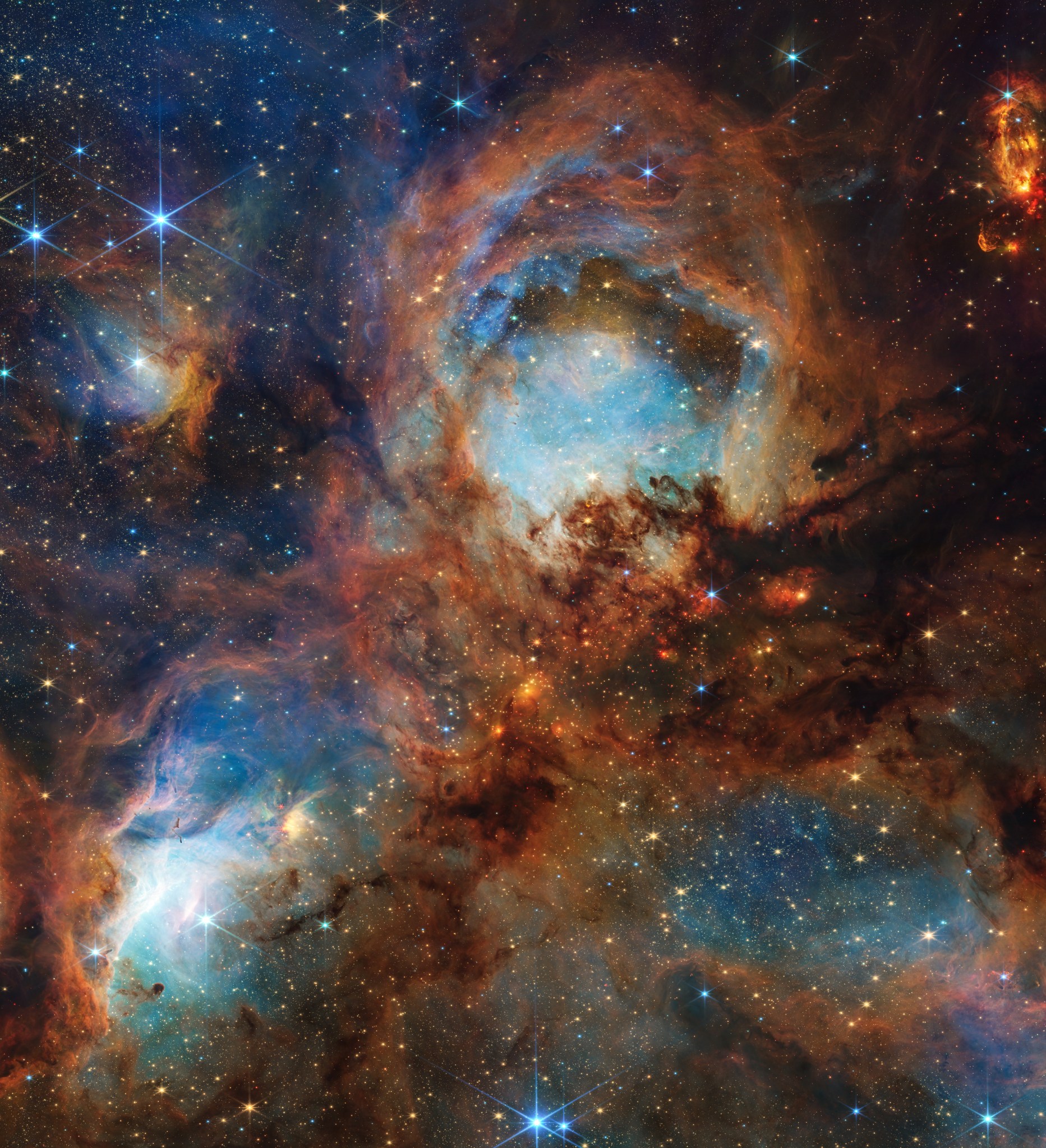NASA’s James Webb Space Telescope Inspects Cat’s Paw
- NASA’s James Webb Space Telescope has released an image of the Cat’s Paw Nebula to celebrate its third anniversary, revealing new structural details and features.
- The telescope used its NIRCam camera to capture the nebula, which shows massive young stars carving away at nearby gas and dust.
- The bright starlight from these massive stars produces a bright nebulous glow, represented in blue in the image.
- The local star formation process will eventually come to a stop due to the lively behavior of these massive stars.
- The image provides new insights into the Cat’s Paw Nebula and its complex processes, showcasing the telescope’s capabilities after three years of operation.
NASA’s James Webb Space Telescope team released this image of the Cat’s Paw Nebula on July 10, 2025, in honor of the telescope’s third anniversary. Webb’s NIRCam (Near-Infrared Camera) revealed never-before-seen structural details and features: Massive young stars carve away at nearby gas and dust, while their bright starlight produces a bright nebulous glow represented in blue. As a consequence of these massive stars’ lively behavior, the local star formation process will eventually come to a stop.
Take a tour through this section of the Cat’s Paw Nebula.
Image credit: NASA, ESA, CSA, STScI
Q. What is being celebrated by NASA’s James Webb Space Telescope?
A. The third anniversary of revealing stunning scenes of the cosmos in infrared light.
Q. What is the name of the nebula that was inspected by the James Webb Space Telescope?
A. The Cat’s Paw Nebula (NGC 6334).
Q. Which instrument on the James Webb Space Telescope revealed structural details and features of the Cat’s Paw Nebula?
A. The NIRCam (Near-Infrared Camera).
Q. What is happening to the local star formation process in the Cat’s Paw Nebula due to massive young stars?
A. It will eventually come to a stop.
Q. How did the bright starlight of massive young stars affect the appearance of the nebulous glow in the Cat’s Paw Nebula?
A. The bright starlight produced a bright nebulous glow represented in blue.
Q. What is the result of the massive young stars carving away at nearby gas and dust in the Cat’s Paw Nebula?
A. A bright nebulous glow was created.
Q. Who are the organizations that collaborated on this project with NASA?
A. NASA, ESA, CSA, STScI.
Q. When was the image of the Cat’s Paw Nebula released by NASA’s James Webb Space Telescope?
A. July 10, 2025.
Q. What is the significance of the Cat’s Paw Nebula in this context?
A. It represents a region where massive young stars are carving away at nearby gas and dust.
Q. Why is it important to study the Cat’s Paw Nebula?
A. To understand the process of star formation and how it affects the surrounding environment.

